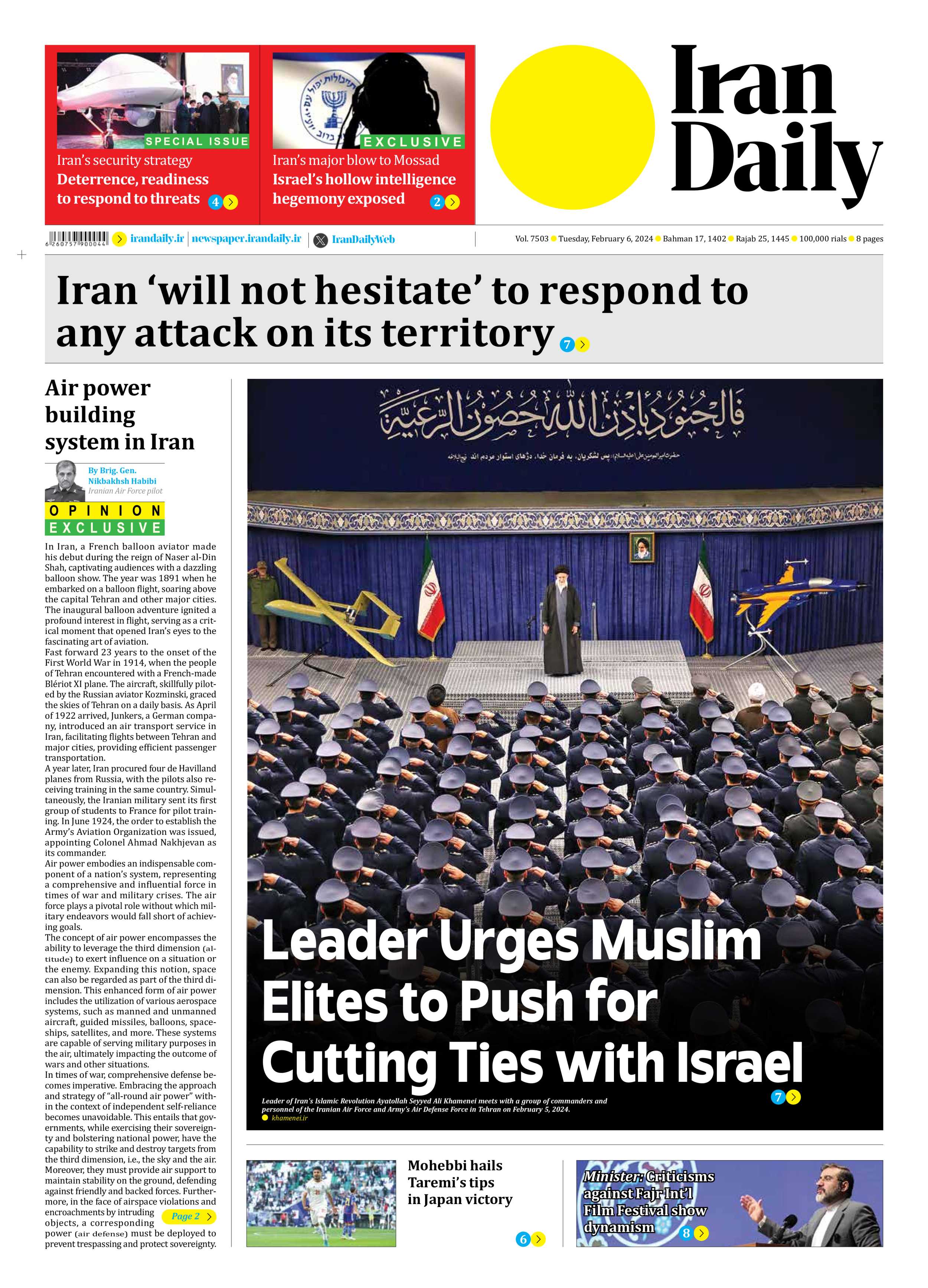
Air power building system in Iran
By Brig. Gen. Nikbakhsh Habibi
Iranian Air Force pilot
In Iran, a French balloon aviator made his debut during the reign of Naser al-Din Shah, captivating audiences with a dazzling balloon show. The year was 1891 when he embarked on a balloon flight, soaring above the capital Tehran and other major cities. The inaugural balloon adventure ignited a profound interest in flight, serving as a critical moment that opened Iran’s eyes to the fascinating art of aviation.
Fast forward 23 years to the onset of the First World War in 1914, when the people of Tehran encountered with a French-made Blériot XI plane. The aircraft, skillfully piloted by the Russian aviator Kozminski, graced the skies of Tehran on a daily basis. As April of 1922 arrived, Junkers, a German company, introduced an air transport service in Iran, facilitating flights between Tehran and major cities, providing efficient passenger transportation.
A year later, Iran procured four de Havilland planes from Russia, with the pilots also receiving training in the same country. Simultaneously, the Iranian military sent its first group of students to France for pilot training. In June 1924, the order to establish the Army’s Aviation Organization was issued, appointing Colonel Ahmad Nakhjevan as its commander.
Air power embodies an indispensable component of a nation’s system, representing a comprehensive and influential force in times of war and military crises. The air force plays a pivotal role without which military endeavors would fall short of achieving goals.
The concept of air power encompasses the ability to leverage the third dimension (altitude) to exert influence on a situation or the enemy. Expanding this notion, space can also be regarded as part of the third dimension. This enhanced form of air power includes the utilization of various aerospace systems, such as manned and unmanned aircraft, guided missiles, balloons, spaceships, satellites, and more. These systems are capable of serving military purposes in the air, ultimately impacting the outcome of wars and other situations.
In times of war, comprehensive defense becomes imperative. Embracing the approach and strategy of “all-round air power” within the context of independent self-reliance becomes unavoidable. This entails that governments, while exercising their sovereignty and bolstering national power, have the capability to strike and destroy targets from the third dimension, i.e., the sky and the air. Moreover, they must provide air support to maintain stability on the ground, defending against friendly and backed forces. Furthermore, in the face of airspace violations and encroachments by intruding objects, a corresponding power (air defense) must be deployed to prevent trespassing and protect sovereignty.
Page 2







